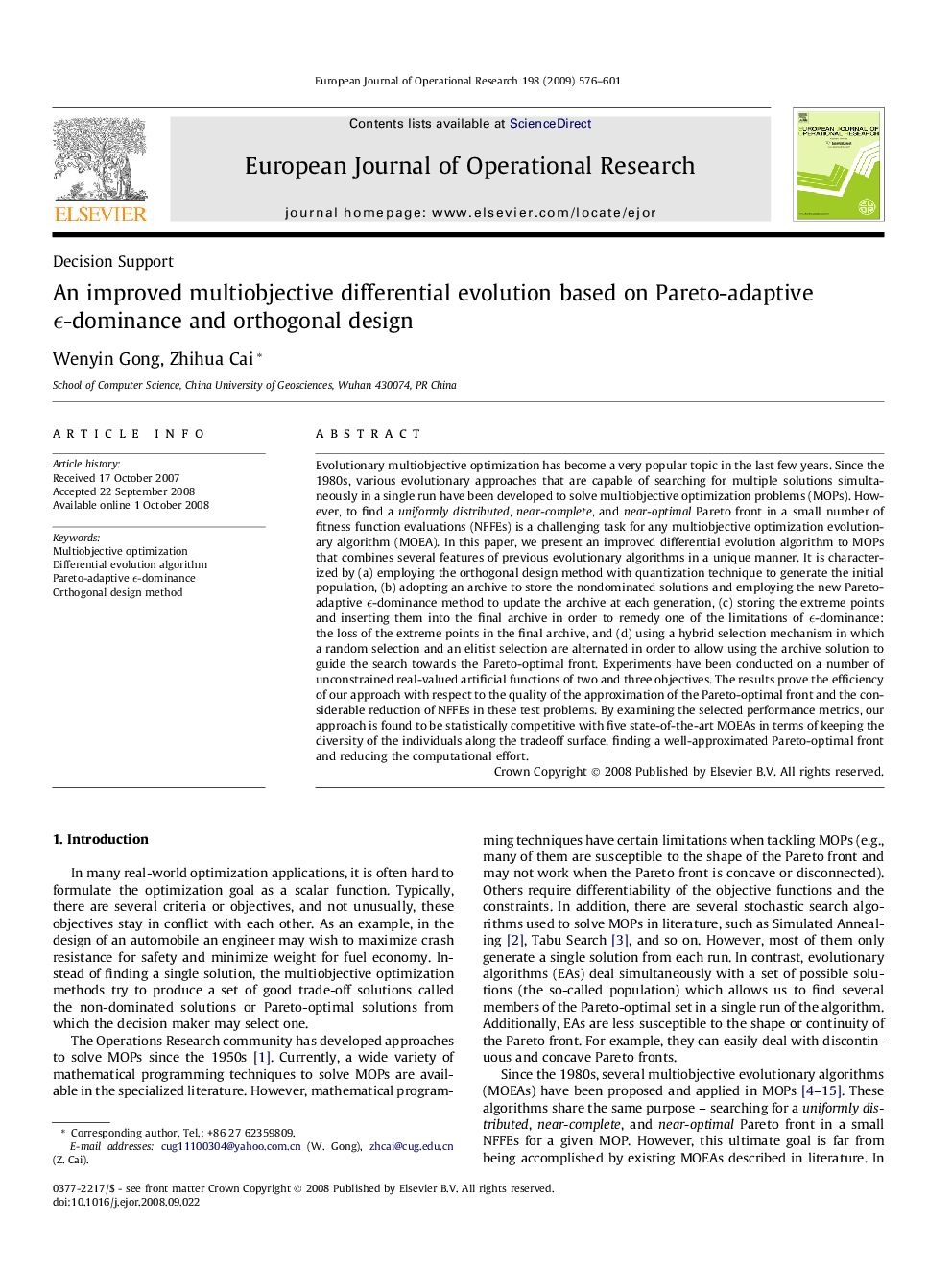| Article ID | Journal | Published Year | Pages | File Type |
|---|---|---|---|---|
| 477228 | European Journal of Operational Research | 2009 | 26 Pages |
Evolutionary multiobjective optimization has become a very popular topic in the last few years. Since the 1980s, various evolutionary approaches that are capable of searching for multiple solutions simultaneously in a single run have been developed to solve multiobjective optimization problems (MOPs). However, to find a uniformly distributed, near-complete, and near-optimal Pareto front in a small number of fitness function evaluations (NFFEs) is a challenging task for any multiobjective optimization evolutionary algorithm (MOEA). In this paper, we present an improved differential evolution algorithm to MOPs that combines several features of previous evolutionary algorithms in a unique manner. It is characterized by (a) employing the orthogonal design method with quantization technique to generate the initial population, (b) adopting an archive to store the nondominated solutions and employing the new Pareto-adaptive ϵϵ-dominance method to update the archive at each generation, (c) storing the extreme points and inserting them into the final archive in order to remedy one of the limitations of ϵϵ-dominance: the loss of the extreme points in the final archive, and (d) using a hybrid selection mechanism in which a random selection and an elitist selection are alternated in order to allow using the archive solution to guide the search towards the Pareto-optimal front. Experiments have been conducted on a number of unconstrained real-valued artificial functions of two and three objectives. The results prove the efficiency of our approach with respect to the quality of the approximation of the Pareto-optimal front and the considerable reduction of NFFEs in these test problems. By examining the selected performance metrics, our approach is found to be statistically competitive with five state-of-the-art MOEAs in terms of keeping the diversity of the individuals along the tradeoff surface, finding a well-approximated Pareto-optimal front and reducing the computational effort.
